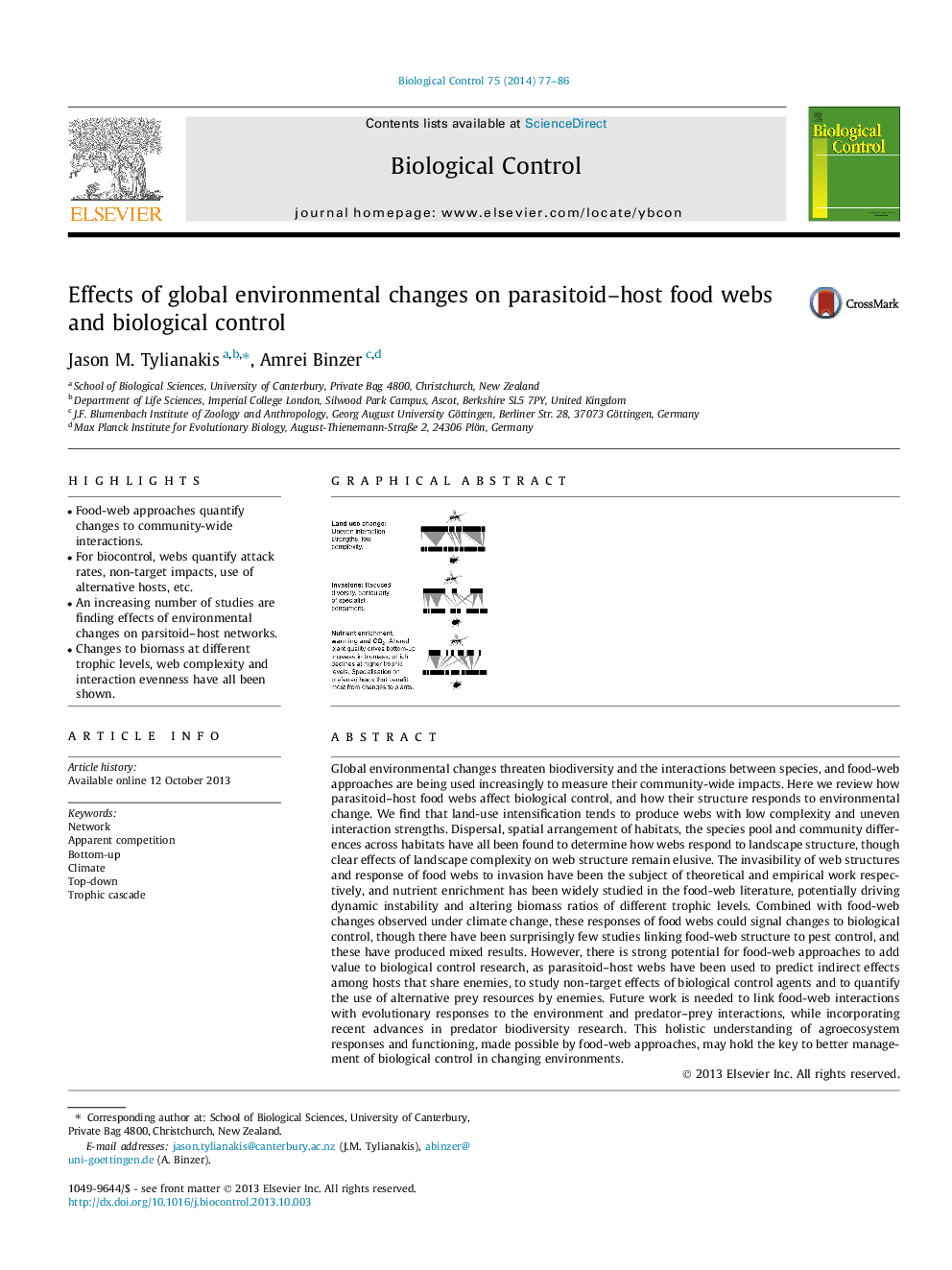| کد مقاله | کد نشریه | سال انتشار | مقاله انگلیسی | نسخه تمام متن |
|---|---|---|---|---|
| 4503905 | 1624259 | 2014 | 10 صفحه PDF | دانلود رایگان |
• Food-web approaches quantify changes to community-wide interactions.
• For biocontrol, webs quantify attack rates, non-target impacts, use of alternative hosts, etc.
• An increasing number of studies are finding effects of environmental changes on parsitoid–host networks.
• Changes to biomass at different trophic levels, web complexity and interaction evenness have all been shown.
Global environmental changes threaten biodiversity and the interactions between species, and food-web approaches are being used increasingly to measure their community-wide impacts. Here we review how parasitoid–host food webs affect biological control, and how their structure responds to environmental change. We find that land-use intensification tends to produce webs with low complexity and uneven interaction strengths. Dispersal, spatial arrangement of habitats, the species pool and community differences across habitats have all been found to determine how webs respond to landscape structure, though clear effects of landscape complexity on web structure remain elusive. The invasibility of web structures and response of food webs to invasion have been the subject of theoretical and empirical work respectively, and nutrient enrichment has been widely studied in the food-web literature, potentially driving dynamic instability and altering biomass ratios of different trophic levels. Combined with food-web changes observed under climate change, these responses of food webs could signal changes to biological control, though there have been surprisingly few studies linking food-web structure to pest control, and these have produced mixed results. However, there is strong potential for food-web approaches to add value to biological control research, as parasitoid–host webs have been used to predict indirect effects among hosts that share enemies, to study non-target effects of biological control agents and to quantify the use of alternative prey resources by enemies. Future work is needed to link food-web interactions with evolutionary responses to the environment and predator–prey interactions, while incorporating recent advances in predator biodiversity research. This holistic understanding of agroecosystem responses and functioning, made possible by food-web approaches, may hold the key to better management of biological control in changing environments.
Figure optionsDownload as PowerPoint slide
Journal: Biological Control - Volume 75, August 2014, Pages 77–86
